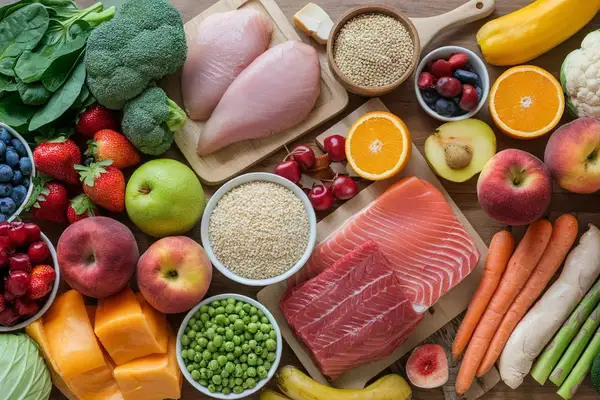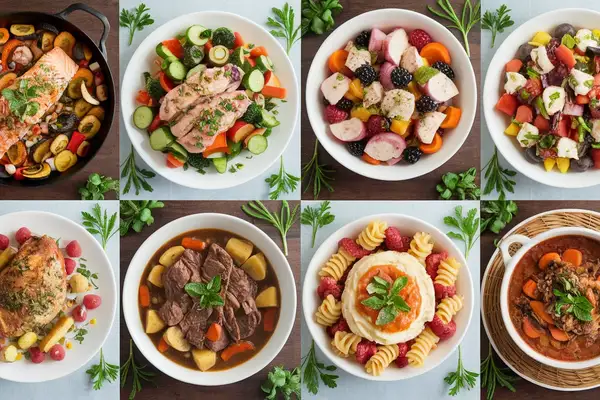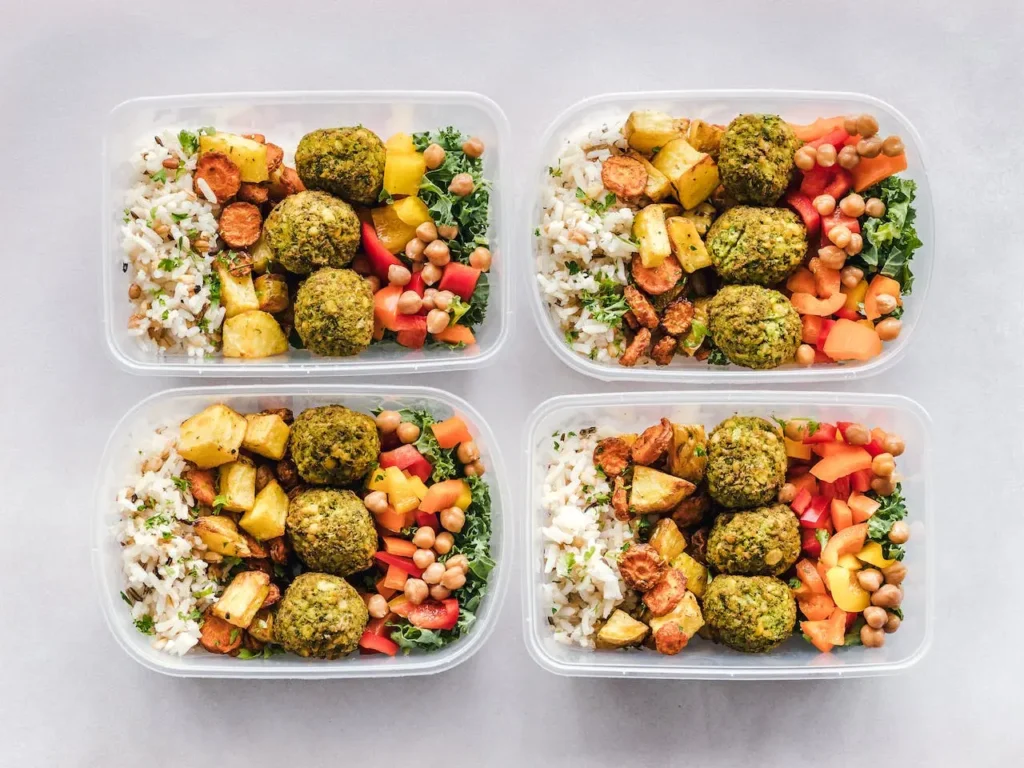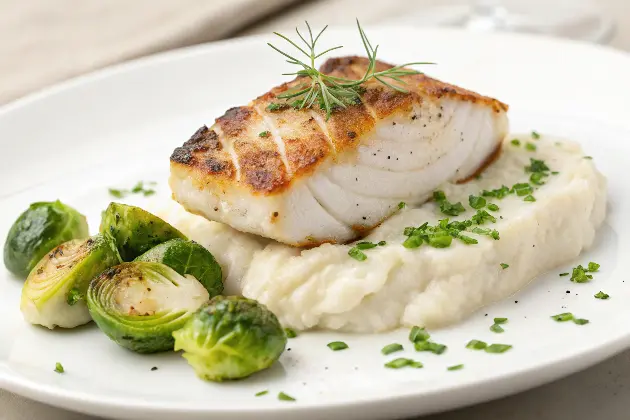7 Day Gallbladder Diet Menu with Complete Food List
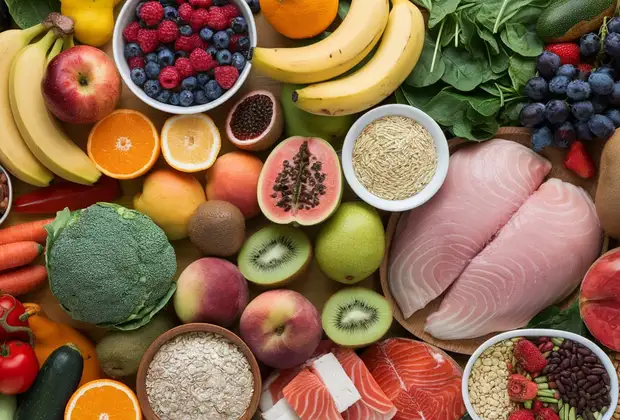
What is a Gallbladder Diet?
This post may contain affiliate links, meaning I may earn a commission if you make a purchase, at no extra cost to you. I only recommend products I trust. Thank you for your support.
A healthy gallbladder diet focuses on foods that are low in fat and easy-to-digest foods that won’t overwhelm your digestive system.
The gallbladder plays a key role in digesting fats by storing bile produced by the liver. Without it, or when it’s struggling with gallstones, your body needs a little extra help processing fats.
A gallbladder diet can reduce symptoms like bloating, nausea, and diarrhea, ensuring a smoother recovery.
With the right foods, you can support gallbladder health, reduce discomfort, aid digestion, and promote healing.
Whether you’ve had your gallbladder removed or are dealing with gallstones, this 7 day gallbladder diet menu will guide you through a week of nourishing and satisfying meals.
This gallbladder diet plan features low fat gallbladder diet recipes, foods to eat after gallbladder surgery, and a delicious gallbladder diet menu plan to get you started.
7 Day Gallbladder Diet Menu
Here’s a complete 7 day gallbladder diet menu filled with easy low fat gallbladder friendly meals that are easy to digest and gentle on the digestive system.
Each day of this gallbladder diet meal plan features simple gallbladder diet recipes designed to provide balanced nutrition while minimizing discomfort.
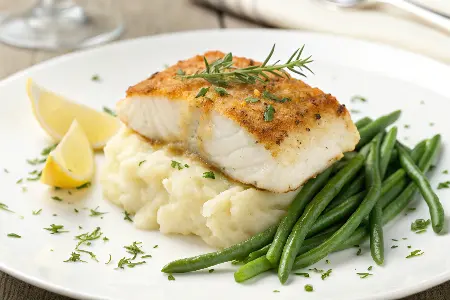
Day 1
Breakfast:
- Rice Pudding with Strawberry Sauce: Cook rice in almond milk until creamy. Top with a strawberry sauce made by simmering strawberries with a bit of honey. (½ cup cooked rice, 1/4 cup almond milk, 1/4 cup strawberries, 1 tsp honey)
Lunch:
- Greek Salad with Arugula, Chickpeas, and Lemon Herb Dressing: Toss arugula, chickpeas, red onions, Kalamata olives, and tomatoes with a light lemon herb dressing. (1 cup arugula, ¼ cup chickpeas, 2 tbsp red onion, 4 olives, ½ cup tomatoes, 1 tsp olive oil, 1 tbsp lemon juice, 1 tsp water, ½ tsp dried oregano)
Dinner:
- Baked Cod with Mashed Potato and Steamed Green Beans: Bake cod with lemon & herbs; boil potatoes and mash with milk; steam green beans. (6 oz cod, juice of ¼ lemon, 1 tsp dried parsley, 1 cup potatoes, 2 tbsp milk, 1 cup green beans)
Snacks:
- Greek Yogurt with Honey and Blueberries: Top plain Greek yogurt with honey and fresh blueberries. (½ cup Greek yogurt, 1 tbsp honey, ¼ cup blueberries)
- Oatmeal Energy Bites: Roll oats, peanut butter, honey, and chia seeds into bite-sized balls. (¼ cup oats, 1 tbsp peanut butter, 1 tsp honey, 1 tsp chia seeds)
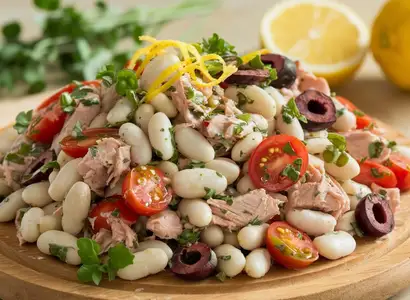
Day 2
Breakfast:
- Rice Pudding Brekkie: Make rice pudding with almond milk and a touch of honey. Add a sprinkle of cinnamon on top. (½ cup cooked rice, 1/4 cup almond milk, 1 tsp honey, cinnamon)
- Egg White Scramble with Vegetables: Sauté diced bell peppers, spinach, and tomatoes in olive oil. Add egg whites and scramble until cooked. (4 egg whites, ¼ cup bell peppers, ¼ cup spinach, ¼ cup tomatoes, 1 tsp olive oil)
Lunch:
- Italian Bean and Tuna Salad: Mix white beans with flaked tuna, red onion, and a light olive oil vinaigrette. Serve over mixed greens. (½ cup white beans, 3 oz tuna, 2 tbsp red onion, 1 tsp olive oil, mixed greens)
Dinner:
- Spaghetti Squash with Light Tomato Sauce: Roast spaghetti squash and top with a light tomato sauce made from simmered tomatoes, olive oil, and herbs. (1 cup spaghetti squash, ¼ cup tomato sauce, 1 tsp olive oil)
Snacks:
- Cucumber Slices with Hummus: Slice cucumbers and dip into hummus for a crunchy snack. (½ cup cucumber slices, 2 tbsp hummus)
- Hard-Boiled Eggs: Boil eggs and enjoy them as a protein-rich snack. (2 eggs)
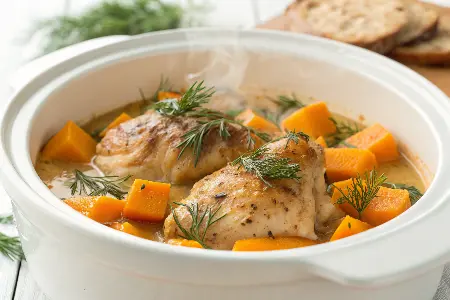
Day 3
Breakfast:
- Strawberry Papaya Smoothie: Blend strawberries, papaya, and coconut water into a refreshing smoothie. (½ cup strawberries, 1/4 cup papaya, ½ cup coconut water)
Lunch:
- Beetroot and Macadamia Salad: Toss roasted beetroot with chopped macadamia nuts and baby spinach, drizzled with lemon juice. (½ cup roasted beetroot, ¼ cup macadamia nuts, 1 cup spinach, 1 tsp lemon juice)
Dinner:
- Slow‑Cooker Chicken with Pumpkin: Combine chicken thighs, diced pumpkin, broth & spices in slow cooker; cook on low until tender. (6 oz chicken thighs, 1 cup pumpkin, 1 cup low‑sodium chicken broth, 1 tsp cumin, ½ tsp cinnamon)
Snacks:
- Apple Slices with Almond Butter: Slice a small apple and serve with almond butter. (1 small apple, 1 tbsp almond butter)
- Banana with Peanut Butter: Spread peanut butter on a banana for a delicious and filling snack. (1 medium banana, 1 tbsp peanut butter)
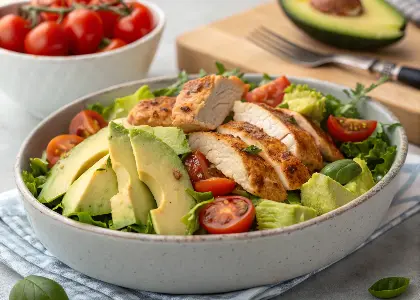
Day 4
Breakfast:
- Chia Seed Pudding with Berries: Soak chia seeds in almond milk overnight. Top with fresh berries. (2 tbsp chia seeds, ½ cup almond milk, ¼ cup berries)
Lunch:
- Avocado Chicken Salad: Toss shredded chicken, diced avocado, chopped lettuce & cherry tomatoes with lime juice & olive oil. (6 oz cooked chicken, ½ avocado, 2 cups lettuce, ½ cup tomatoes, juice of ½ lime, 1 tbsp olive oil)
- Creamy Soup: Blend steamed cauliflower with vegetable broth and a pinch of turmeric for a creamy soup. (½ cup steamed cauliflower, ½ cup vegetable broth, turmeric)
Dinner:
- Japanese Brown Rice Salad: Cook brown rice and toss with edamame, cucumber, and sesame seeds. Drizzle with a low-sodium soy sauce dressing. (½ cup brown rice, ¼ cup edamame, ¼ cup cucumber, 1 tsp sesame seeds, 1 tsp soy sauce)
Snacks:
- Protein Balls: Blend dates, oats, almond butter, and a touch of honey. Roll into balls for a protein-packed snack. (¼ cup oats, 1 tbsp almond butter, 2 dates, 1 tsp honey)
- Roasted Chickpeas: Roast chickpeas with olive oil and seasonings until crispy. (¼ cup chickpeas, 1 tsp olive oil)
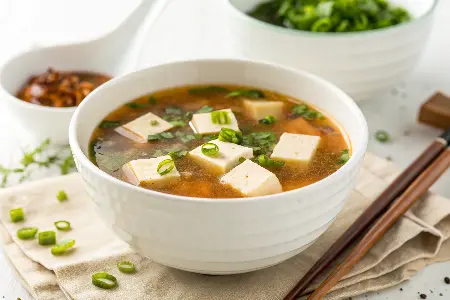
Day 5
Breakfast:
- Low-Fat Cottage Cheese with Pineapple: Serve low-fat cottage cheese with fresh diced pineapple. (½ cup cottage cheese, ¼ cup pineapple)
- Egg Muffins: Whisk eggs with diced vegetables and pour into muffin tins. Bake until cooked through. (4 eggs, ¼ cup diced vegetables)
Lunch:
- Miso and Tofu Bone Broth Soup: Warm bone broth, stir in miso paste, add tofu cubes & scallions; simmer briefly. (2 cups bone broth, 1 tbsp miso paste, 4 oz tofu, 1 tbsp scallions)
Dinner:
- Steamed Fish Fillet with Sautéed Spinach: Steam a white fish fillet and serve with lightly sautéed spinach. (3 oz fish fillet, ½ cup spinach)
- Arugula and Radicchio Salad: Mix arugula, radicchio, and sliced almonds. Drizzle with olive oil and lemon juice. (1 cup arugula, ½ cup radicchio, 2 tbsp sliced almonds, 1 tsp olive oil, lemon juice)
Snacks:
- Cucumber Sandwiches: Spread light cream cheese between cucumber slices for a refreshing snack. (4 cucumber slices, 2 tbsp cream cheese)
- Oven-Dried Tomato and Basil Skewers: Skewer oven-dried tomatoes with fresh basil and mozzarella. (¼ cup oven-dried tomatoes, 4 basil leaves, 2 oz mozzarella)
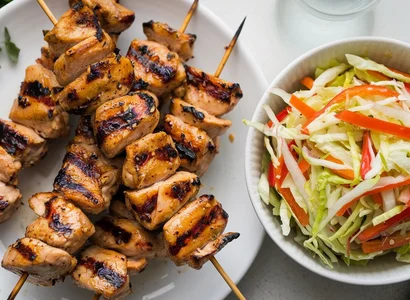
Day 6
Breakfast:
- Smoothie Bowl with Spinach, Mango, and Chia Seeds: Blend almond milk, banana, spinach, and mango, then top with chia seeds. (½ cup almond milk, ½ banana, ¼ cup mango, 1 tsp chia seeds)
Lunch:
- Baked Quinoa with Fruit Salad: Bake quinoa with almond milk and top with a mixed fruit salad (berries, apple, and pear). (½ cup cooked quinoa, ¼ cup almond milk, ½ cup fruit salad)
Dinner:
- Spaghetti with Chard: Cook whole-grain spaghetti and toss with sautéed Swiss chard, olive oil, and garlic. (½ cup whole-grain spaghetti, 1 cup Swiss chard, 1 tsp olive oil, 1 garlic clove)
- Grilled Chicken Skewers: Grill chicken cubes on skewers with bell peppers and zucchini. (3 oz chicken, bell peppers, zucchini)
Snacks:
- Sliced Pear with Almonds: Serve fresh pear slices with a handful of almonds. (1 small pear, 10-12 almonds)
- Pumpkin Seeds: Enjoy a handful of roasted pumpkin seeds for a healthy snack. (¼ cup pumpkin seeds)
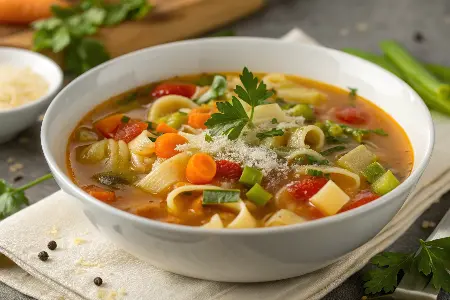
Day 7
Breakfast:
- Buckwheat Pancakes with Blueberries: Make buckwheat pancakes and top with fresh blueberries and a drizzle of honey. (2 small buckwheat pancakes, ¼ cup blueberries, 1 tsp honey)
- Breakfast Smoothie Bowl: Blend almond milk, frozen berries, and a banana. Pour into a bowl and top with granola and chia seeds. (½ cup almond milk, ¼ cup frozen berries, 1 banana, 2 tbsp granola, 1 tbsp chia seeds)
Lunch:
- Minestrone Soup: Sauté onion & garlic, add veggies, beans, pasta & tomato broth; simmer until flavors meld. (1 cup mixed veggies, ½ cup beans, ¼ cup small pasta, 1 cup tomato broth, 1 tbsp olive oil, 1 tsp Italian seasoning)
Dinner:
- Broccoli Coconut Rice: Steam broccoli and mix with cooked brown rice, coconut milk, and a pinch of salt. (½ cup broccoli, ½ cup brown rice, ¼ cup coconut milk)
Snacks:
- Melon Slices with Low-Fat Cottage Cheese: Serve fresh melon slices with low-fat cottage cheese. (½ cup melon, ¼ cup cottage cheese)
- Vegetable Omelette Cups: Whisk eggs and pour into a muffin tin with diced vegetables. Bake until set. (2 eggs, ¼ cup mixed diced vegetables)
Healthy Foods to Eat for Gallbladder
This list provides a variety of healthy foods to eat to help maintain a healthy gallbladder diet that is supportive of gallbladder function:
1. Fruits
- Apples
- Bananas
- Berries (strawberries, blueberries, raspberries)
- Oranges
- Pears
- Peaches
- Papaya
- Kiwi
- Watermelon
- Grapes
2. Vegetables
- Leafy greens (spinach, kale, arugula)
- Broccoli
- Carrots
- Zucchini
- Beets
- String Beans
- Bell peppers
- Sweet potatoes
- Tomatoes
- Cucumber
3. Whole Grains
- Brown rice
- Quinoa
- Oats (rolled or steel-cut)
- Barley
- Whole-grain bread
- Whole-grain pasta
- Farro
- Buckwheat
4. Lean Proteins
- Skinless chicken breast
- Turkey breast
- Fish (salmon, trout, tilapia)
- Tofu
- Legumes (lentils, chickpeas, black beans)
- Eggs (preferably egg whites)
5. Healthy Fats (In Moderation)
- Olive oil
- Avocado
- Nuts (almonds, walnuts, pistachios)
- Seeds (chia seeds, flaxseeds, pumpkin seeds)
6. Dairy Alternatives
- Almond milk
- Soy milk
- Coconut milk (unsweetened)
- Greek yogurt (low-fat)
7. Herbs and Spices
- Ginger
- Turmeric
- Garlic
- Basil
- Cilantro
- Parsley
- Oregano
- Thyme
8. Beverages
- Herbal teas (peppermint, ginger)
- Green tea
- light tea
- Water (infused with lemon for flavor)
Foods to Avoid with Gallbladder Issues
Here’s a complete list of foods to avoid with gallbladder issues. Steering clear of these foods can help reduce the risk of gallbladder attacks and manage symptoms:
1. Fats and Oils
- Fried foods (e.g., French fries, fried chicken)
- Trans fats (found in some margarines, shortening, and baked goods)
- Saturated fats (found in fatty cuts of meat and full-fat dairy)
- Processed oils (e.g., palm oil, soybean oil)
- High-fat dairy products (e.g., cream, whole milk, full-fat cheese)
2. Meats and Proteins
- Fatty cuts of meat (e.g., ribeye, pork belly)
- Processed meats (e.g., bacon, sausage, hot dogs)
- Organ meats (e.g., liver, kidney)
- Shellfish (e.g., shrimp, crab) (in excess)
3. Dairy Products
- Whole-fat dairy (e.g., whole milk, heavy cream, full-fat yogurt)
- Cheese (especially high-fat varieties)
- Ice cream and high-fat desserts
4. Refined Grains and Sugars
- White bread and pastries
- Sugary cereals
- White rice and pasta made with refined flour
- Snack foods high in sugar (e.g., candy, cookies)
- Sugar-sweetened beverages (e.g., soda, sweetened juices)
5. High Fiber Foods (Only after gallbladder removal)
- Beans and legumes (e.g., lentils, chickpeas, black beans) can cause gas and bloating.
- Cruciferous vegetables (e.g., broccoli, cauliflower, cabbage, Brussels sprouts) may lead to discomfort.
- Whole grains (e.g., barley, whole wheat products) can be tough to digest initially.
- High fiber fruits (e.g., apples with skin, pears, cherries) may cause discomfort.
6. Processed Foods
- Packaged snacks (e.g., chips, crackers)
- Fast food (e.g., burgers, pizza)
- Frozen meals that are high in fat and sodium
- Processed sweets (e.g., pastries, cakes)
7. High-Sodium Foods
- Canned soups (high in sodium and preservatives)
- Processed meats (e.g., deli meats, bacon)
- Pickled foods (e.g., pickles, olives)
8. Caffeinated and Carbonated Beverages
- Coffee (excessive consumption)
- Energy drinks
- Soft drinks (especially those high in sugar)
9. Spicy Foods
- Foods that are heavily spiced or contain a lot of hot peppers
- Dishes that use excessive amounts of garlic or onion
10. Others
- Certain nuts and seeds (in excess) that are high in fats
- Alcoholic beverages (especially high-sugar cocktails)
Diet Tips for People with Gallstones
By following these dietary tips, individuals with gallstones can help manage their symptoms and potentially reduce the risk of future gallbladder disease complications.
- Choose Low-Fat Foods: Opt for lean proteins such as chicken, turkey, fish, and plant-based proteins. Limit saturated fats found in red meat, full-fat dairy, and fried foods.
- Increase Fiber Intake: Incorporate plenty of fruits, vegetables, and whole grains into your diet. Foods high in fiber can help maintain healthy digestion. A study showed that high fiber foods reduce the risk of gallstone formation.
- Stay Hydrated: Drink plenty of water throughout the day to help support digestion and prevent the formation of stones.
- Limit Refined Carbohydrates: Reduce intake of refined grains, such as white bread and pastries, and opt for whole grain alternatives.
- Watch Portion Sizes: Avoid large meals and aim for smaller, more frequent meals throughout the day to prevent overloading the digestive system.
- Avoid Trans Fats: Stay away from foods containing trans fats, commonly found in processed snacks, baked goods, and some margarine, as they can contribute to gallstone formation.
- Incorporate Healthy Fats: Include moderate amounts of healthy fats, such as those found in avocados, nuts, seeds, and olive oil, which can promote healthy digestion.
- Limit Sugar and Processed Foods: Reduce consumption of sugary snacks, desserts, and processed foods that can lead to weight gain and increase the risk of gallstones. You can consider a no sugar diet.
- Avoid Foods High in Cholesterol: Limit intake of high-cholesterol foods, such as organ meats, shellfish, and certain full-fat dairy products.
- Be Cautious with Dairy: Some individuals may find that high-fat dairy products can trigger symptoms. Opt for low-fat or lactose-free options if necessary.
- Consider a Mediterranean Diet: This diet is rich in fruits, vegetables, whole grains, and healthy fats and has been associated with a reduced risk of gallstones.
Conclusion
Living with gallbladder health issues doesn’t mean you have to give up on delicious food.
Following a 7 day gallbladder diet menu can significantly aid in managing gallbladder health and alleviating symptoms associated with gallbladder issues.
This low fat gallbladder diet plan emphasizes nutrient-rich low fat foods that support digestion while avoiding high-fat and processed items that could trigger discomfort.
With this 7 day gallbladder diet menu which includes a variety of gallbladder diet recipes such as fruits, vegetables, whole grains, and lean proteins, individuals can promote better gallbladder function and overall wellness.
Remember, a well-structured gallbladder diet meal plan not only provides delicious and wholesome meals but also empowers you to take charge of your health sustainably.
If you’re recovering from gallbladder surgery or dealing with ongoing issues, it’s always a good idea to consult with your doctor or a registered dietitian for personalized advice.
- 7-day meal plan for anemic people
- 7-day MIND diet menu plan for beginners
- Type 2 diabetic meal plan
- Easy anti-inflammatory recipes
- Metabolic confusion diet plan
- Alkaline diet food list & recipes
- Low glycemic index diet plan
- Bland foods for the BRAT diet
- Low carb ketogenic diet plan
- Best diet to lower triglycerides naturally
- Foods to avoid with arthritis
- Calcium rich foods for osteoporosis
- Cleansing diet with apple cider vinegar
Frequently Asked Questions (FAQs)
Is rice good for the gallbladder?
Yes, rice can be a good option for those with gallbladder issues. Brown rice, in particular, is a whole grain that’s easy to digest and low in fat. It provides fiber and nutrients without putting stress on the gallbladder.
Can I eat bananas with gallstones?
Absolutely! Bananas are a great choice for people with gallstones. They’re low in fat, high in fiber, and provide essential nutrients. Plus, they’re easy to digest and can help soothe the digestive system.
What fruit can remove gallstones?
While no fruit can directly remove gallstones, some may help prevent them or ease symptoms. Citrus fruits like lemons, oranges, and grapefruits contain pectin, which may help reduce the formation of gallstones.
What foods cleanse the gallbladder?
Leafy greens (spinach, kale)
Citrus fruits
Beets
Cucumbers
Apples
Artichokes
Lean proteins
Whole grains
Can I eat boiled eggs with gallstones?
You can eat egg whites, as they are low in fat. However, it’s best to avoid egg yolks, which are high in fat and can trigger gallbladder symptoms.
Disclaimer: This gallbladder diet menu is intended for informational purposes only and should not be considered medical advice.
Always consult with a healthcare provider or a registered dietitian before making significant changes to your diet, especially if you are recovering from gallbladder surgery.
